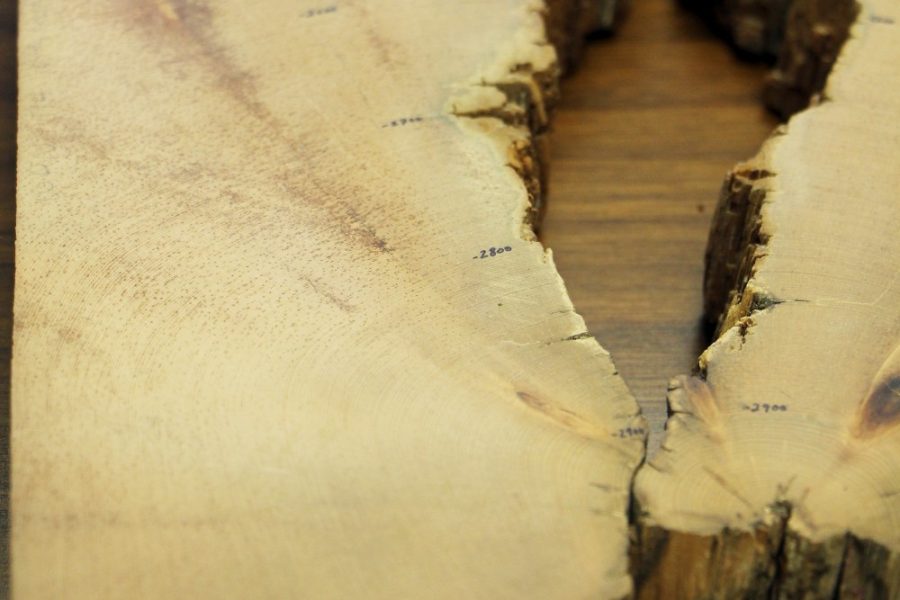Don Currey was a graduate student at the University of North Carolina working on his master’s thesis about glacial movements in the Great Basin when he stumbled upon a very old-looking tree. Currey knew that counting the tree rings could help him get an approximate time frame for glacial movements in the basin, so he had the tree cut down and took it back to his lab, where he counted the rings and realized he had made a very big mistake.
The bristlecone pine he had chosen to cut down was almost 5,000 years old. This was the fate of the Prometheus tree.
When Currey cut into the bark of the Prometheus tree in 1964, he was chopping down the world’s oldest known tree at the time.
Currey was researching the trails of sediments, called moraines, left behind from glacial movements. There was a specific moraine in the Snake Mountains that Currey was especially interested in researching, said Matt Salzer, a research associate at the UA tree-ring lab, which now houses pieces of the Prometheus tree.
“He figured that the moraine must have been there at least as long as the tree had been there,” said Salzer. “So he asked permission from the Forest Service to cut the tree down so he could count how many rings were there, and then he would know how long the moraine had been there.”
According to Salzer, the Forest Service agreed to let Currey cut down the tree, despite the fact that many people recognized that the tree was very old. A crew was dispatched, and instead of drilling into the tree for a sample, the ancient tree was felled.
After he brought the tree back to his lab, Currey counted the rings to determine the age of the moraine. It was then that he realized he accidentally killed the oldest known tree.
While there was no way to fix his mistake, Currey’s research did highlight the importance of tree rings and tree-ring research, known as dendrochronology. The field, which was pioneered at the UA in 1937 by Andrew Douglass, is a multifaceted science that allows researchers to use tree rings to investigate climate changes, date archaeological sites or even determine when forest fires occurred.
Through dendrochronology, researchers can use frost lines in tree rings to get an idea of when significant environmental events occurred, Salzer said. Forest fires also leave their mark on tree rings, allowing scientists to understand periods of past forest fires as well as giving them insight on how to manage future fires.
Other researchers use dendrochronology to aid in resource management. Ramzi Touchan, a research professor at the lab, used tree-ring chronology to track periods of drought in the Mediterranean to create climatic reconstruction.
“If we can use proxy records like tree rings, where we can have a tree-ring chronology that goes back 200 or 300 years, then that will help to develop climatic reconstruction,” Touchan said. “That will help us study the climate — looking at the frequency and distribution of drought over time.”
Although the Prometheus tree helped Currey determine the age of the moraine, many researchers are adamant that the fate of the tree could have been avoided.
“Had he taken the time to come to this laboratory and ask questions, he probably wouldn’t have ever cut the tree down because he wouldn’t have needed to,” said Rex Adams, a senior research specialist at the lab. “He just didn’t really understand how to sample.”
—Follow Michaela Kane @MichaelaLKane









